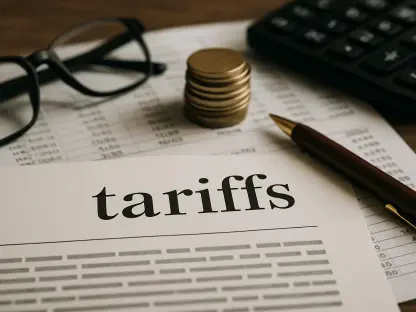As the global real estate landscape continues to prioritize sustainability, CapitaLand Investment (CLI), a prominent real estate investment manager based in Singapore, has introduced a groundbreaking framework known as “Return on Sustainability” (RoS). This initiative is crafted to quantify the financial benefits of green investments, marking a significant shift beyond mere climate promises toward demonstrable results. Emerging from CLI’s latest Global Sustainability Report, the framework has been shaped using data from selected commercial properties across the Asia-Pacific region. By evaluating eight key variables related to financial performance, the RoS framework provides essential guidance for investment decisions, asset management enhancements, and capital allocation in sustainability-driven initiatives.
The RoS Framework: Metrics and Mechanisms
Evaluating Green Financial Performance
The RoS framework employs a comprehensive approach to assess sustainability investments. It considers green capital expenditure (capex), utility costs, rent premiums, carbon cost reductions, and enhanced asset valuations. These metrics are meticulously analyzed to offer insights into investment viability. By integrating these variables, CLI provides stakeholders with a robust tool to evaluate the financial implications of sustainable practices. The framework effectively answers pressing questions about the financial return on going green, helping stakeholders to align their strategies with environmental responsibility. The ability to weigh these factors aids in making informed decisions that balance financial and environmental considerations.
Guiding Investment and Risk Mitigation
Notably, the RoS framework is not just about measuring outcomes but also guiding future investment strategies. It highlights potential Internal Rate of Return (IRR) benefits from green capex investments, demonstrating how these investments can protect assets against risks such as carbon taxes and increasing insurance premiums. The breakeven model within the framework evaluates long-term savings garnered from initial investments in sustainability. This model is essential as it aligns with CLI’s broader strategy of using sustainability to foster operational resilience. Furthermore, users are equipped to make informed decisions that enhance both the financial and environmental health of their portfolios.
CLI’s Progress in Renewable Energy and Gender Diversity
Emphasizing Renewable Energy and Sustainable Finance
CLI’s sustainability report shines a light on remarkable strides made in renewable energy adoption and sustainable finance. The report highlights a noticeable increase in renewable energy usage, now constituting 7.3% of CLI’s portfolio—a 17% rise from previous metrics. Additionally, the report states that over $4.3 billion has been secured through sustainable financing channels. These achievements reflect a growing commitment to integrating renewable sources and securing funds aligned with green principles. This transition not only underscores CLI’s dedication to environmental responsibility but also its strategic foresight in adapting to evolving market demands.
Advancing Gender Diversity and Management Roles
In another significant development, CLI’s commitment to gender diversity has seen substantial progress. Women now represent 30% of CLI’s board and 37% of senior management roles, marking a notable improvement in diversity within leadership positions. This effort to redefine gender representation aligns with broader industry trends aiming for inclusivity and diversity. By championing these values, CLI intensifies its reputation as an equitable employer, positioning itself as a leader in driving meaningful change in corporate governance structures. This initiative also accentuates the importance of diverse perspectives in achieving successful outcomes in both business and sustainability spheres.
Technology and Innovation in CLI’s Sustainability Journey
Integrating Technology for Sustainable Solutions
CLI’s innovative approach is greatly aided by the integration of technology and innovation in its sustainability endeavors. By employing cutting-edge tools, the company accelerates the shift toward a low-carbon future, fostering efficiency and effectiveness in sustainability practices. This technological augmentation allows for refined data analysis, facilitating more accurate assessments of sustainability efforts. Consequently, CLI can fine-tune its strategies to maximize both financial returns and environmental benefits. Additionally, the application of such technology acts as a catalyst, enabling quicker adaptation to sustainability challenges while enhancing overall operational performance.
Pioneering a Low-Carbon Economy
The RoS framework presents an exhaustive model for evaluating the sustainability of investments. It encompasses factors like green capital expenditure (capex), utility expenses, rental increases, reductions in carbon-related costs, and improved asset valuations. These elements undergo careful scrutiny to furnish a comprehensive view into the profitability and viability of investments aimed at sustainability. By merging these aspects, CLI supplies stakeholders with a substantive instrument to gauge the financial repercussions of eco-friendly initiatives. This framework adeptly addresses key inquiries concerning the fiscal returns of adopting green practices, thus enabling stakeholders to design strategies that reflect both economic and environmental accountability. The skill in weighing these considerations allows for well-informed decisions that aptly balance the interests of both financial gain and environmental stewardship, ultimately fostering a more sustainable future.









